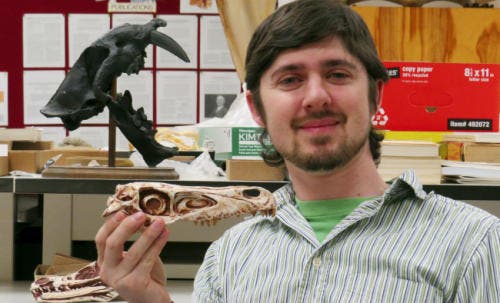Researchers from the University of Pennsylvania have discovered a new species of dinosaur, closely related to the famous velociraptor. This new species, Saurornitholestes sullivani was a bit bulkier, probably had a better sense of smell, and researchers believe it was an even better predator than its cousin.
“This was not a dinosaur you would want to mess with,” said University Pennsylvania doctoral student Steven Jasinski, author of a study of the new species, said in a press release.
Velociraptors got their fame thanks to Jurassic Park, but they weren’t actually that prevalent – they only lived for about 4 million years, and they didn’t live in the Jurassic, heh. They inhabited the Earth approximately 75 to 71 million years ago during the later part of the Cretaceous Period, after the Jurassic.
Jasinski analyzed a skull fragment which was initially found in 1999 and considered a member of Saurornitholestes langstoni, another species of therapod dinosaurs. Jasinski wasn’t convinced, so he ran a comparative analysis of the specimen to other S. langstoni specimens, and he found some small, yet significant differences.
For starters, the surface of the skull responsible for the sense of smell was unusually high – which indicates that it probably had an excellent sense of smell.
This feature means that Saurornitholestes sullivani had a relatively better sense of smell than other dromaeosaurid dinosaurs, including Velociraptor, Dromaeosaurus, and Bambiraptor,” Jasinski said. “This keen olfaction may have made S. sullivani an intimidating predator as well.”
Measuring less than 3 feet in length, the dinosaur wasn’t intimidating through sheer size, but was likely quick and agile, and possibly hunted in packs, which made it a fearsome predator, even more so than the more well known velociraptor.
Source: University of Pennsylvania










